From the deepest oceans to the highest peaks, and from the hottest deserts to the Earth’s poles, there is life that has evolved incredible adaptations to survive in their extreme environments…
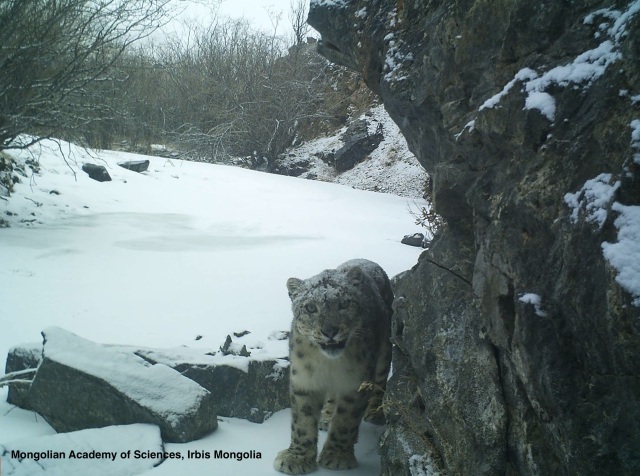
Low oxygen results in a hypoxic environment. Hypoxia occurs when not enough oxygen is carried by the blood supply, leading to neurological and organ failure. Hemoglobin is a protein found in vertebrates’ blood that bonds to, and transports, oxygen.
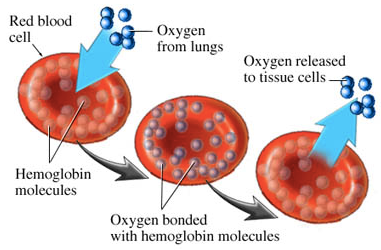
Oxygen molecules binding to hemoglobin in human red blood cells (Photo from Google images)
To combat a low oxygen environment, hemoglobin levels in lowland species increase. Mammals and birds that dive store more oxygen in their lungs, blood, and tissues than their non-diving counterparts. Fish increase the ventilation of water over gills to push more oxygen into their circulatory system. Some species that live at deep depths have larger gill surface area, while species that frequent those depths may gape their mouth open wider to allow more flow over their gills.
 At high altitude, a response to cope with the low oxygen is heavier breathing, and vasodilation in an effort to carry the amount of oxygen the body requires to function. The inability for enough oxygen to be processed also affects the body’s ability to stay warm. Being on the top of a mountain with strong winds and often freezing temperatures, along with the affect of your body shutting down from not allowing the proper time to acclimate, makes for an unpleasant experience. To learn more about the science behind the physiological affects of being at high altitude, check out this blog and short film by Untamed Science!
At high altitude, a response to cope with the low oxygen is heavier breathing, and vasodilation in an effort to carry the amount of oxygen the body requires to function. The inability for enough oxygen to be processed also affects the body’s ability to stay warm. Being on the top of a mountain with strong winds and often freezing temperatures, along with the affect of your body shutting down from not allowing the proper time to acclimate, makes for an unpleasant experience. To learn more about the science behind the physiological affects of being at high altitude, check out this blog and short film by Untamed Science!
To help compensate, species living at high altitude have various morphological characteristics, such as larger lungs and more powerful hearts. Tibetan yaks, a prime example of high altitude adaptations, have both these features, as well as having blood vessels that don’t constrict. They also have a high metabolism, and several genes that are specific for processing low oxygen that other cattle lack. While in the womb, a fetus has a higher percentage of hemoglobin for effective oxygen flow. Tibetan yaks retain their fetal hemoglobin levels into adulthood!
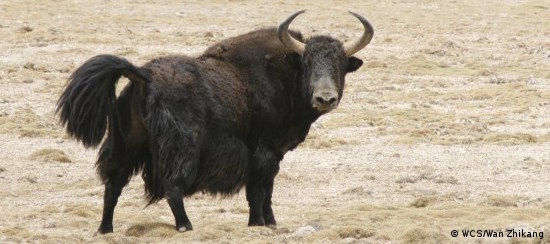
Wild Tibetan yak
Being a high altitude species, living between 2500-5400m above sea level, one would assume that snow leopards also have a more complex physiology, like the Tibetan yak, to help them survive their extreme environment. However, research conducted by Janecka et al. (2015), discovered that this is not the case.
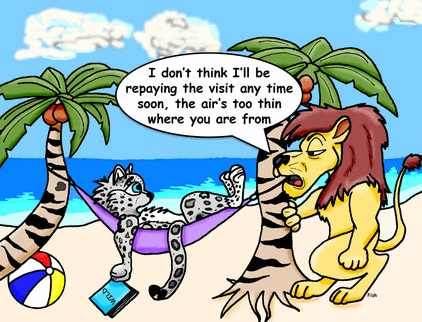
Illustration from Journal of Experimental Biology
The hemoglobin levels of snow leopards is the same as a house cat and their other lowland cousins such as lions, jaguars, tigers, and cougars. Their blood is physiologically not adapted to efficiently bind to oxygen at the altitude that they live at. Snow leopards take in half the amount of oxygen per breath as they would at sea level, which is comparable to what the human body processes at around 5000m.
So how does a snow leopard cope? Similar to many other high altitude species, snow leopards have larger lungs and a more powerful heart than lowland relatives. In relation to other cat species, snow leopards also have wide, but short, nasal cavities.
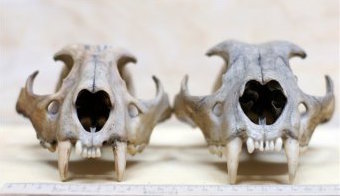
Nasal cavity comparison between the common leopard, Panthera pardus (left) and snow leopard, Panthera uncia (right) (Photo by Animal Almanac)
The wider nasal cavities helps to warm air before it reaches the lungs, but may also aid in bringing more air in with each breath. Until more research is conducted, it has been hypothesized that snow leopards breathe quicker and harder to compensate for lower oxygen.
Resources
Altitude.org http://www.altitude.org/home.php
Arnold, C. (2015). Leopards Breathe Like Pussycats? http://news.nationalgeographic.com/2015/08/150805-snow-leopards-cats-animals-science-pets/
BGI Shenzhen. (2012). Yak genome provides new insights into high altitude adaptation. https://www.sciencedaily.com/releases/2012/07/120705144619.htm
Janecka, J., Neilson, S., Anderson, S., Hoffmann, F., Weber, R., Anderson, T., Storz, J., and Fago, F. (2015). Genetically based low oxygen affinities of felid hemoglobins: lack of biochemical adaptation to high-altitude hypoxia in the snow leopard. Journal of Experimental Biology, 218: 2402-2409. http://jeb.biologists.org/content/218/15/2402
